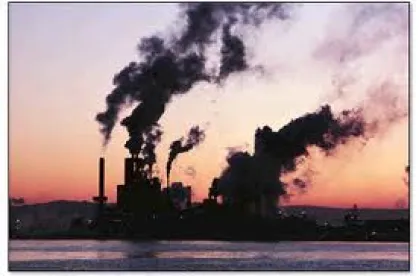Pulp mills can emit hazardous pollutants that have been linked to heart and lung disease
Three advocacy groups sued the Environmental Protection Agency last week over concerns that regulations for paper mills emissions are 25 years out of date.
Greenpeace, the Center for Biological Diversity and Port Townsend AirWatchers filed suit on Dec. 6 under a clause of the Clean Air Act that allows citizens to hold the EPA accountable for carrying out the provisions of the act.
The EPA last reviewed the New Source Performance Standards for kraft pulp mills in 1986. The mills use a chemical process to turn wood chips into pulp to make paper. The standards, by law, are supposed to be reviewed every eight years.
“This is about how much pollution that people living near paper mills have to breathe,” said Helen Kang, the lawyer representing Greenpeace and Port Townsend AirWatchers. “Why does it take a lawsuit from the citizens to do a job that the agency has neglected for 25 years, when the duty is so clear?”
EPA said it is reviewing the lawsuit and could not comment in detail. Asked why it hasn’t reviewed the regulations since 1986, the agency said it has requested and received data from the kraft pulp mill industry to be used in developing rules next year.
Kraft pulp mills emit a host of pollutants, including some that have been linked to heart and lung disease and global warming.
Reviews every eight years are supposed to ensure regulations keep up with new technology for reducing pollution. Allowing 25 years to pass without reviewing regulations means they’re sorely out of date, the groups said.
“When you’re protecting people’s health and protecting the environment, it’s even more important to follow through and do these reviews,” said Gretchen Brewer, director of Port Townsend AirWatchers.
Under the existing New Source Performance Standards, only particulate matter and total reduced sulfur are regulated. Kraft pulp mills also emit pollutants including volatile organic compounds, nitrogen oxide and greenhouse gases.
Without an EPA review, it’s difficult to determine which other air pollutants should be regulated, Kang said.
The EPA acknowledges in a public notice that the data used to determine the New Source Performance Standards is dated. The agency said it is aware of “significant changes … in the number of affected facilities, in industry ownership practices and in emission collection and control configurations.”
EPA and the environmental groups have until the end of February to reach an agreement before the case proceeds in court. “We want either EPA to agree to a schedule of when they’re going to complete the rulemaking, or if they’re not willing to agree, we’ll have the court decide that,” Kang said.



 />i
/>i

